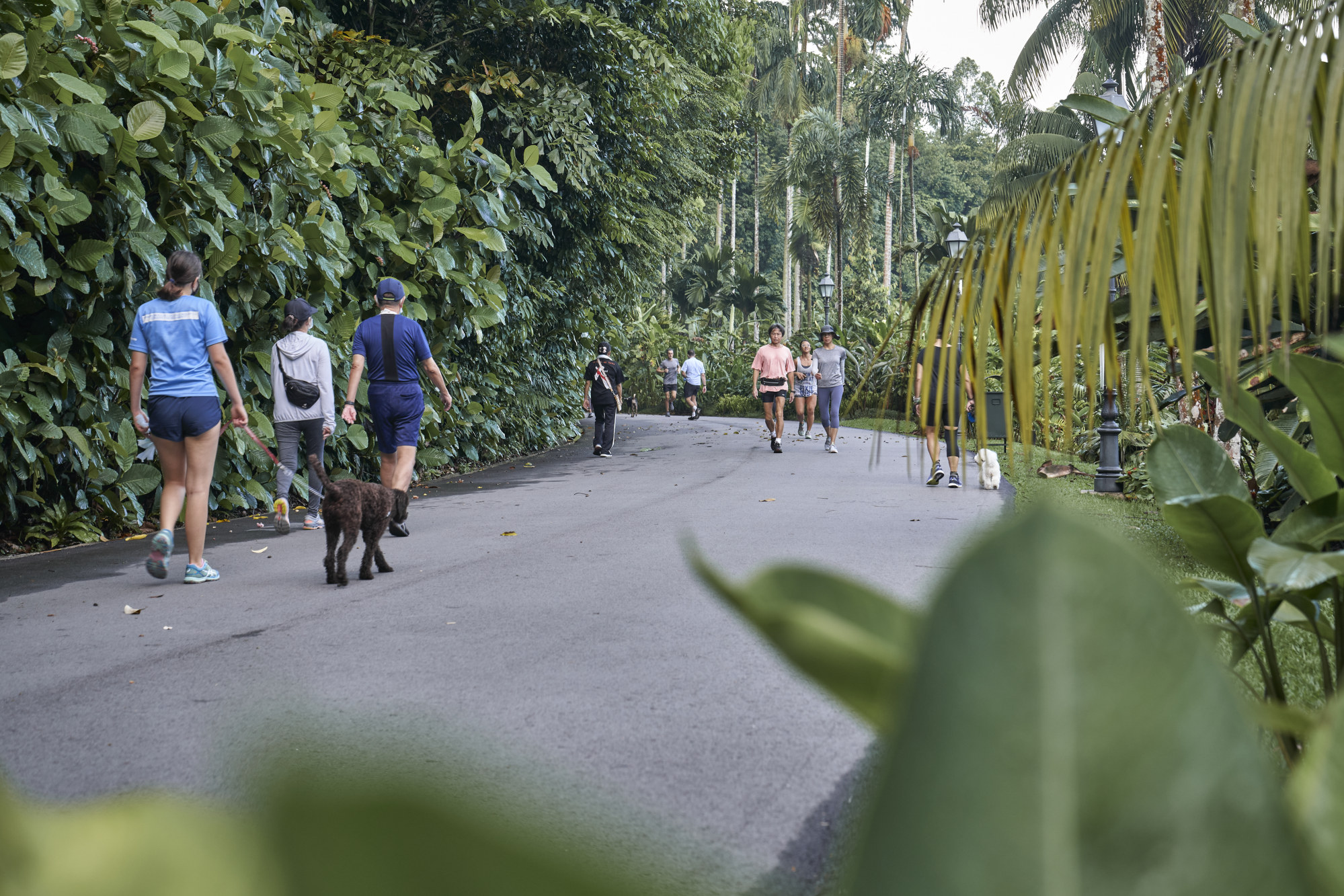
Singapore vs Hong Kong: for a healthier city, give people green spaces to enjoy
- While Hong Kong has better access to urban green space, Singapore has more of it and of better quality
- As more people grapple with mental health issues post-pandemic, urban planning is more important than ever
In London, significantly more residents sought urban green spaces during the pandemic lockdowns, especially those who lived closer to such spaces, my study found. The results, published in the Nature Mental Health journal, were based on data from two million mobile phone users.
This study, in collaboration with Assistant Professor Ke Michael Mai from the National University of Singapore (NUS) Business School, and Dr Souneil Park from Telefonica Research, also looked at the mental health and locations of 5,000 people in the United Kingdom.
Post-pandemic, people in Singapore and Hong Kong have increased their visits to urban green spaces, I found in my ongoing study in collaboration with NUS research associate Alex Yeung. Consistent with the results observed in London, respondents in both Asian cities also reported a more significant improvement in their mental well-being after such visits during the Covid-19 outbreak, compared to pre-pandemic.
This underscores the critical role that urban green space plays in supporting mental health. There is an increased demand for accessible urban green space, particularly during periods of restricted mobility, when mental well-being becomes a paramount concern.

Although Singapore and Hong Kong are known for sustainable urban planning, there are significant differences. (Note: country parks are excluded from the sample of urban green spaces.)
Urban green space in Singapore is less accessible than in Hong Kong. In Singapore, more than 22 per cent of public housing is beyond a 10-minute walk to an urban green space, compared to only 5 per cent in Hong Kong.
On average, the distance between public housing and the nearest urban green space in Singapore is about 572m, or a walk of six to eight minutes. In contrast, the average distance between a public rental flat in Hong Kong and the nearest green space is just 301m, or a four-minute walk.
But the quality of green space is better in Singapore. It allocates more room for its urban green spaces, which are 4.3 hectares on average compared to Hong Kong’s 0.74 hectares. Singaporeans also enjoy about 15 square metres (161 sq ft) of that green space per person, compared to 3 square metres per Hongkonger. Singapore’s urban green spaces are also more equitably distributed across its residential neighbourhoods than Hong Kong’s.

Furthermore, we found that Hongkongers reported lower satisfaction with the maintenance of their urban green spaces compared with their satisfaction with accessibility.
Intriguingly, we found that public behaviour towards an urban green space is influenced by its condition and there appears to be very little compromise on the matter. Whether their local urban green space is well-maintained or has shortcomings is highly relevant in determining whether people visit.
This is distinct from the preferences of Singaporeans, who tend to visit their urban green space more often when they are satisfied with the accessibility.
Hong Kong needs urban green lungs to be a more liveable city
In other words, merely having urban green space is not enough to incentivise public visits, and in turn, support mental well-being.
These findings highlight the importance of the comprehensive planning of urban green space, to consider attributes beyond accessibility, such as quality and maintenance. The government needs to understand what is lacking and the state of public satisfaction with these spaces when shaping plans for urban greening.
Compared to London, Singapore and Hong Kong have higher population densities and the appropriate planning of urban green space is even more critical so as to maximise the positive outcomes.
While people appreciate the mental health benefits of urban green spaces, especially during the pandemic, they will not visit if they are not satisfied with them. Improving these green spaces should be prioritised in the planning and building of healthier, pandemic-proof cities.
Lee Kwan Ok is the dean’s chair associate professor and deputy head of the Department of Real Estate at the National University of Singapore (NUS) Business School. The opinions expressed here are those of the writer and do not represent the views and opinions of NUS

